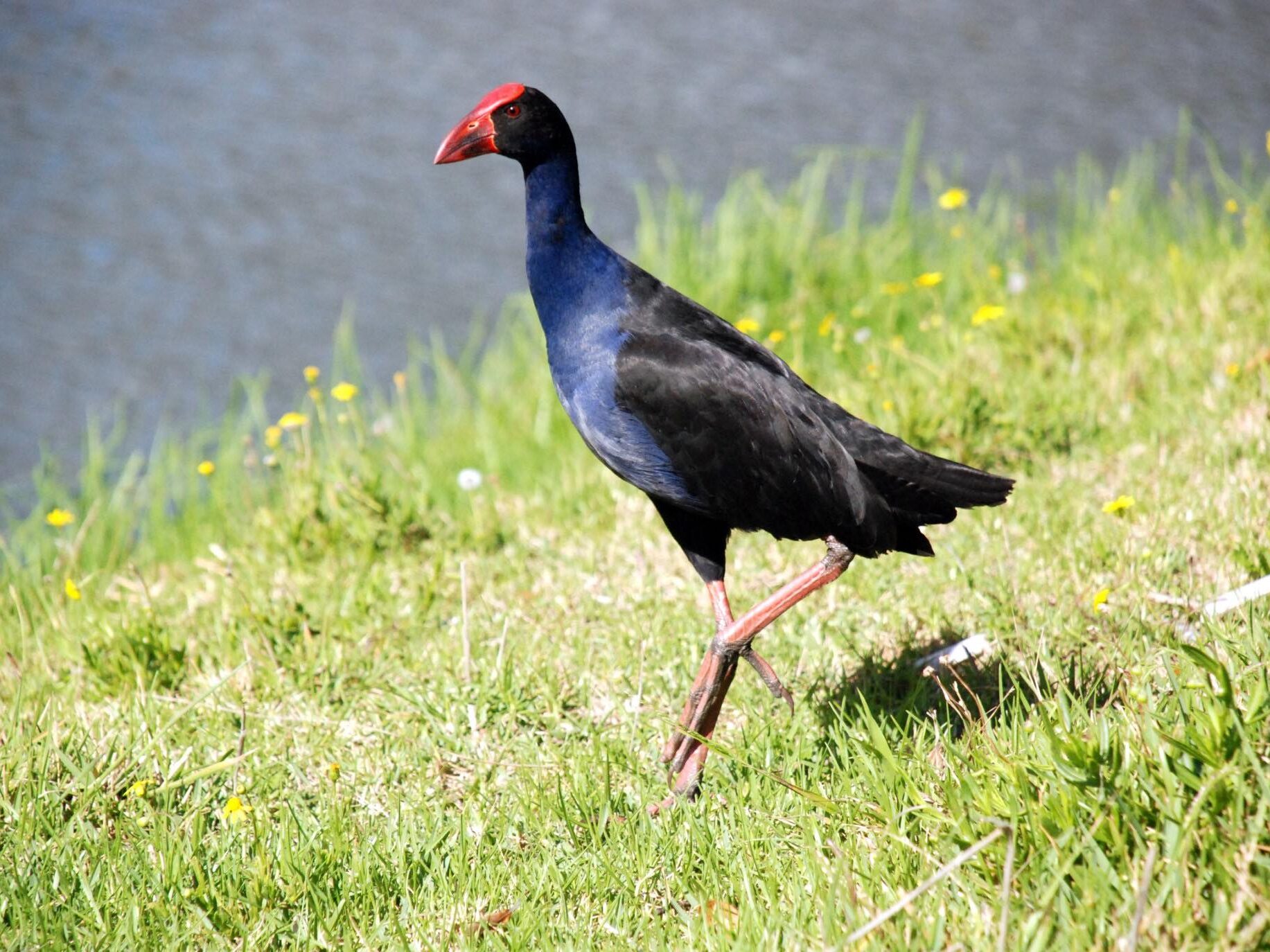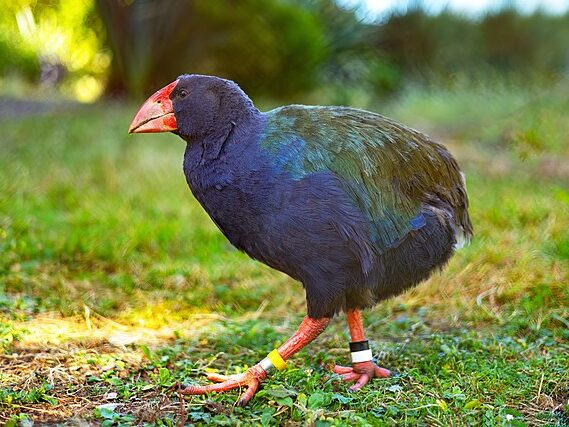Do you find puppets a bit weird? Are you mysterious? Love your family above all else? You might have more in common with takahē than you think. Survivors against the odds, there’s a lot we can learn from these New Zealand icons.
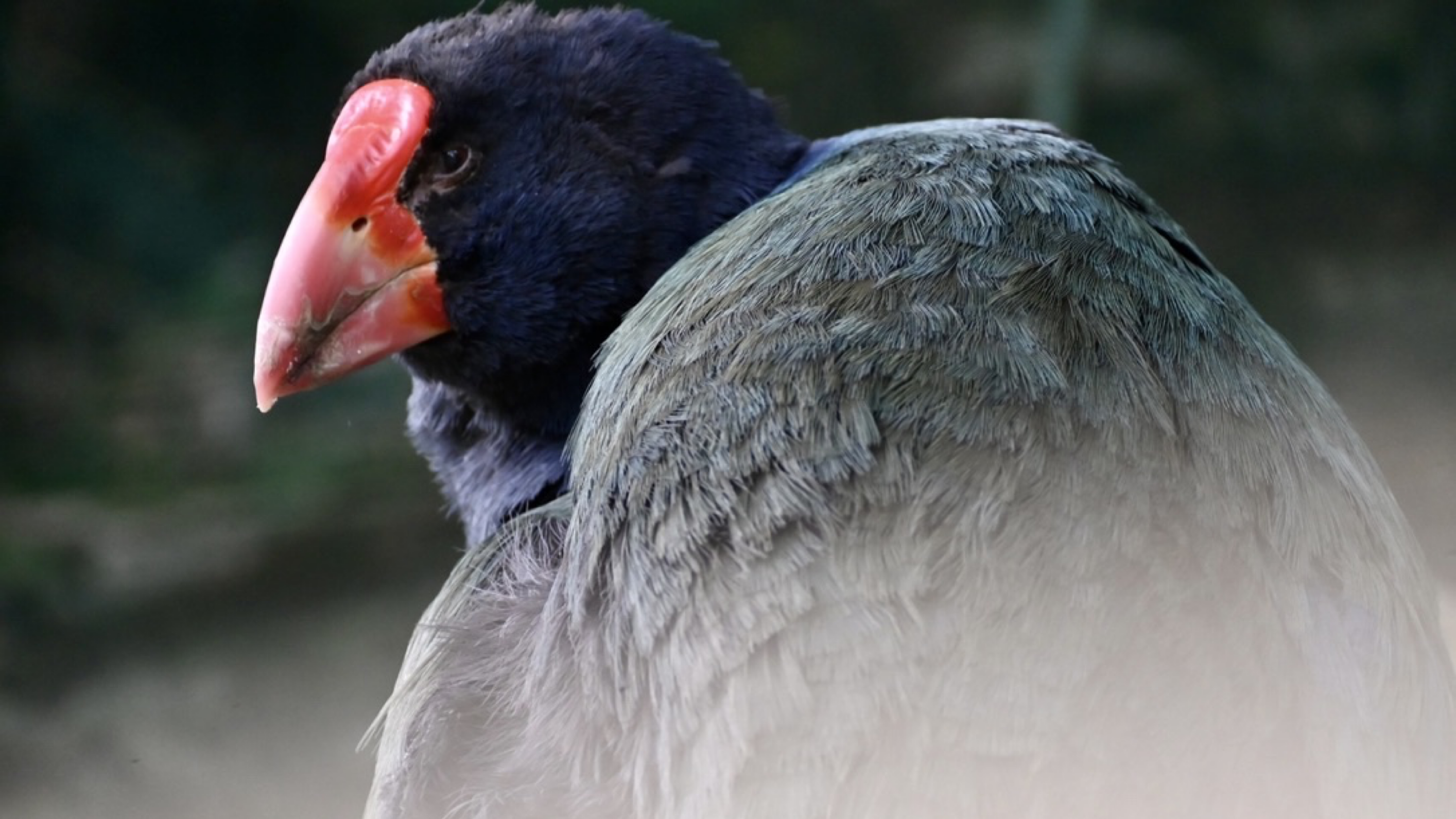
April is takahē awareness month, we’ve compiled five life lessons from takahē:
Always keep ‘em guessing
Extinction is forever, unless you’re the takahē.
After being presumed extinct for nearly 50 years, the South Island takahē were rediscovered in 1948 in a remote Fiordland valley.
Thanks to an intensive programme of captive breeding, translocations, stoat control and deer culling – the South Island takahē population has seen a gradual increase. As of October 2021, there were 440 takahē.
To put that in perspective, there are an estimated 600,000 pūkeko in New Zealand. That’s around 1,300 pūkeko for every takahē.
The North Island takahē was not as fortunate as his South Island cousin. And sadly, the North Island takahē is one of the 51 New Zealand bird species known to have become extinct since human settlement. Only fossils and a possible sighting in 1894 explains how this species lived. It appears to have been even larger than the South Island takahē.
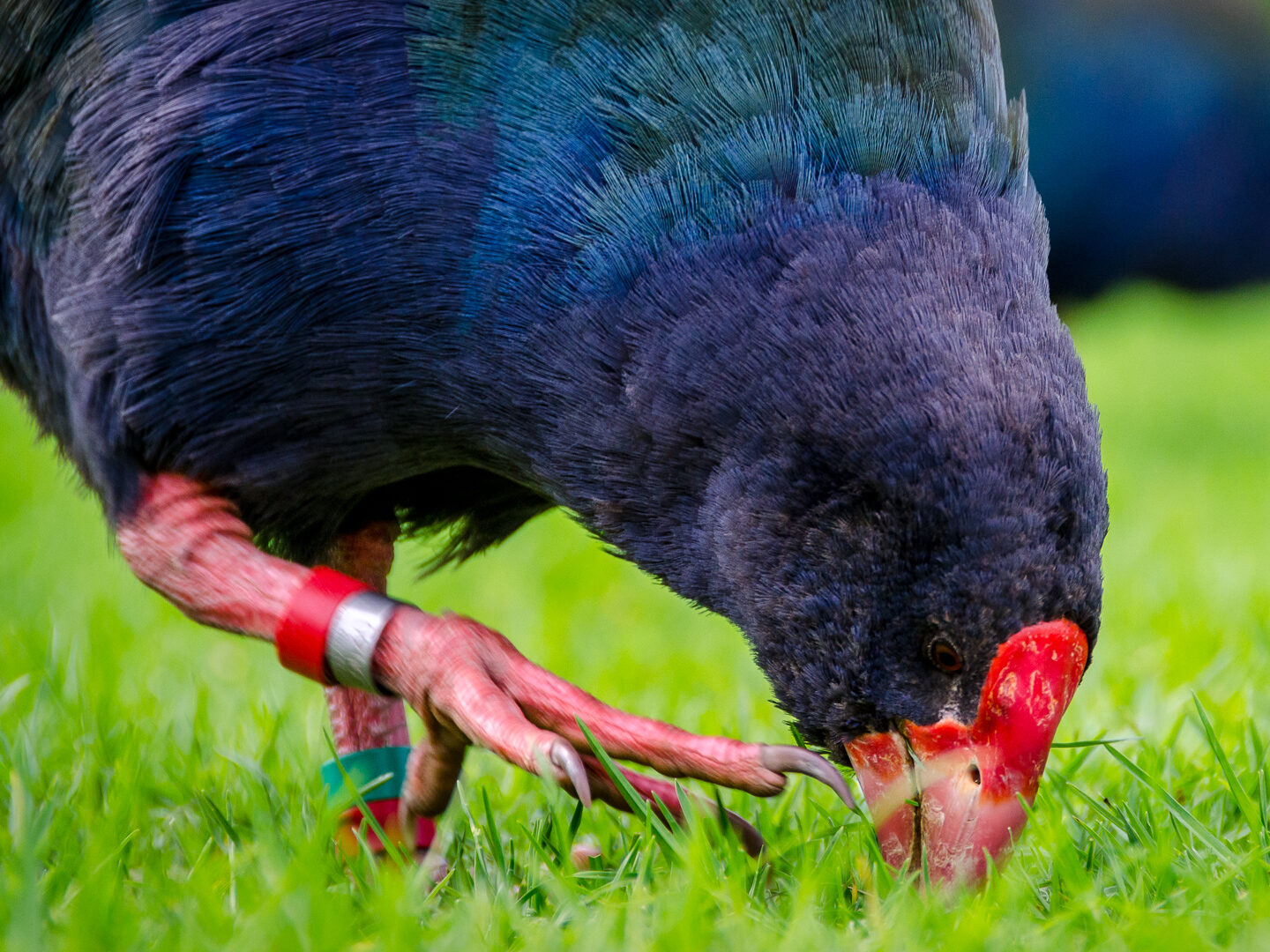
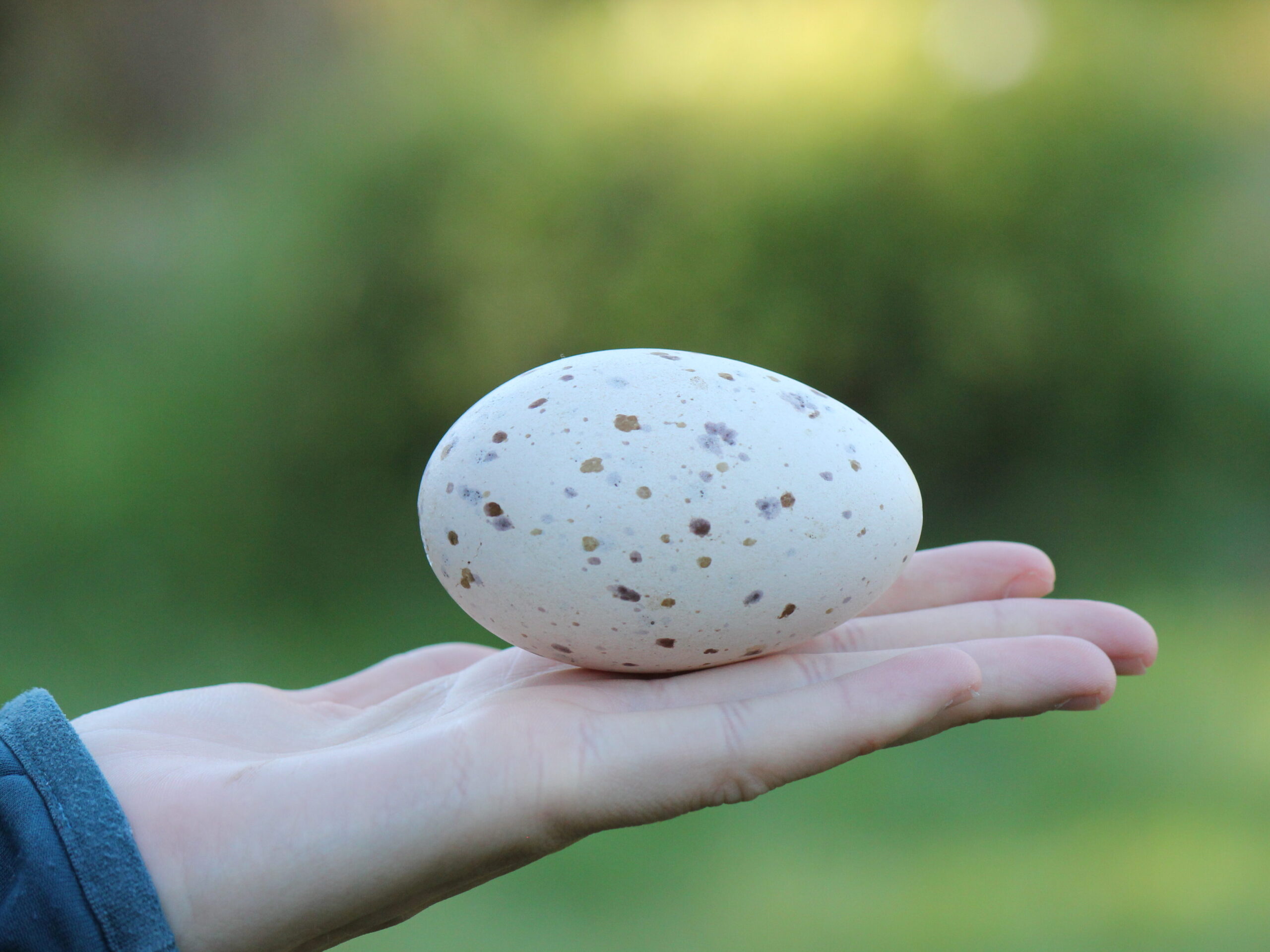
Family is everything
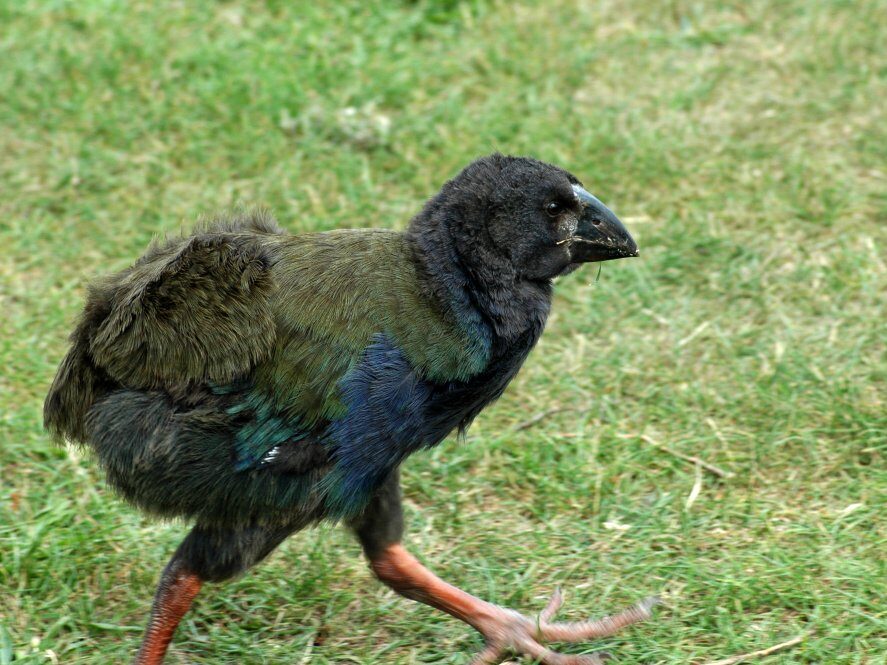
Raising a takahē chick is hard work.
Takahē parents share incubation and chick-rearing responsibilities equally. Incubation takes about 30 days.
Once hatched, chicks stay in the nest for about a week, and then as they become stronger, they climb out and follow their parents, begging for food. Doting parents, mum and dad takahē will carefully peel off the tougher outer leaves of tussock shoots before feeding them to their young.
Young takahē can breed in their first year but often remain with their parents for up to two years and will even help them raise chicks.
Takahē guard their turf fiercely. And will defend their breeding territory, fighting if necessary.
Stand tall
What is in a name? The takahē’s name is derived from the Māori word ‘takahea’, which means ‘to stand up tall and stamp one’s feet on the ground’.
The extinct North Island takahē was called moho or mohoau by Māori – meaning lonely.
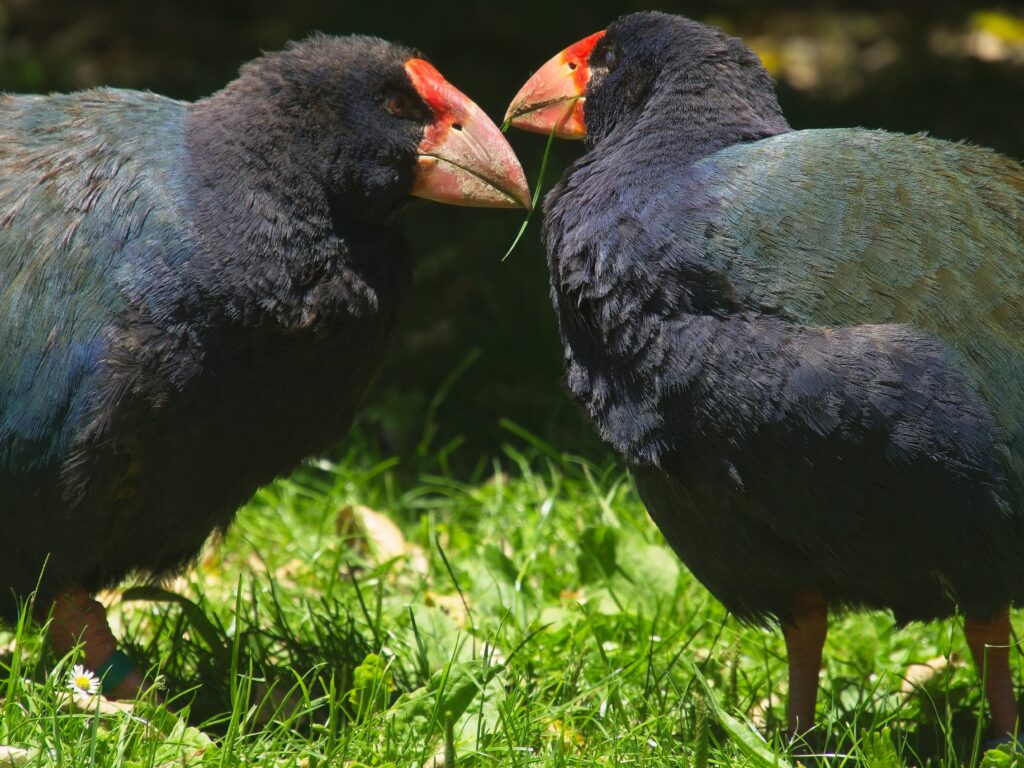
Keep it real
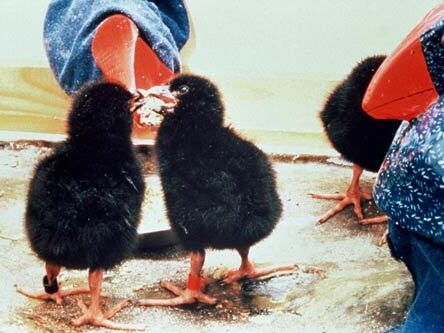
In the 1980s, as part of a conservation effort, puppets and models were used to rear takahē chicks. They were fed by hand-held puppets that played the sounds of adult contact calls. Fibreglass ‘mums’ were placed in the sleeping areas. These sculptures also had speakers playing contact calls.
This method was found to be unsuccessful—chicks reared by takahē “puppets” have not bred as successfully as wild-reared birds – and hasn’t been used since 2011.
These days, eggs are left in the nest, and chicks are left to be reared naturally by adult takahē.
We now know that the best creature to raise a takahē is another takahē!
Being special can come at a cost
Are takahē just fat pūkeko? No, obviously. They are very different species, but they share a common ancestor and distinct similarities.
So why do pūkeko thrive while our takahē struggle on the verge of extinction?
Several million years ago, the takahē’s ancestors flew from Australia to New Zealand. Over millions of years, the takahē adapted to our country’s unique environment. Without mammalian predators, the takahē became a massive, sturdy, flightless bird that bred slowly.
In contrast, it is generally believed that pūkeko was in New Zealand less than one thousand years ago. Pūkeko are lighter and faster than their bulkier cousins and can still fly. Pūkeko are also quicker breeders – raising four to six chicks in the summer, whereas takahē usually only have one or two.
Pūkeko were still relatively well adapted to avoid introduced predators like rats and stoats and have thrived in New Zealand. Unfortunately, the same can’t be said for takahē.
